
Considering adding a screened porch to your home? Discover the average cost of a screened-in porch, depending on its size, location, and more.
Choose a patio for open air and a lanai for shade and shelter
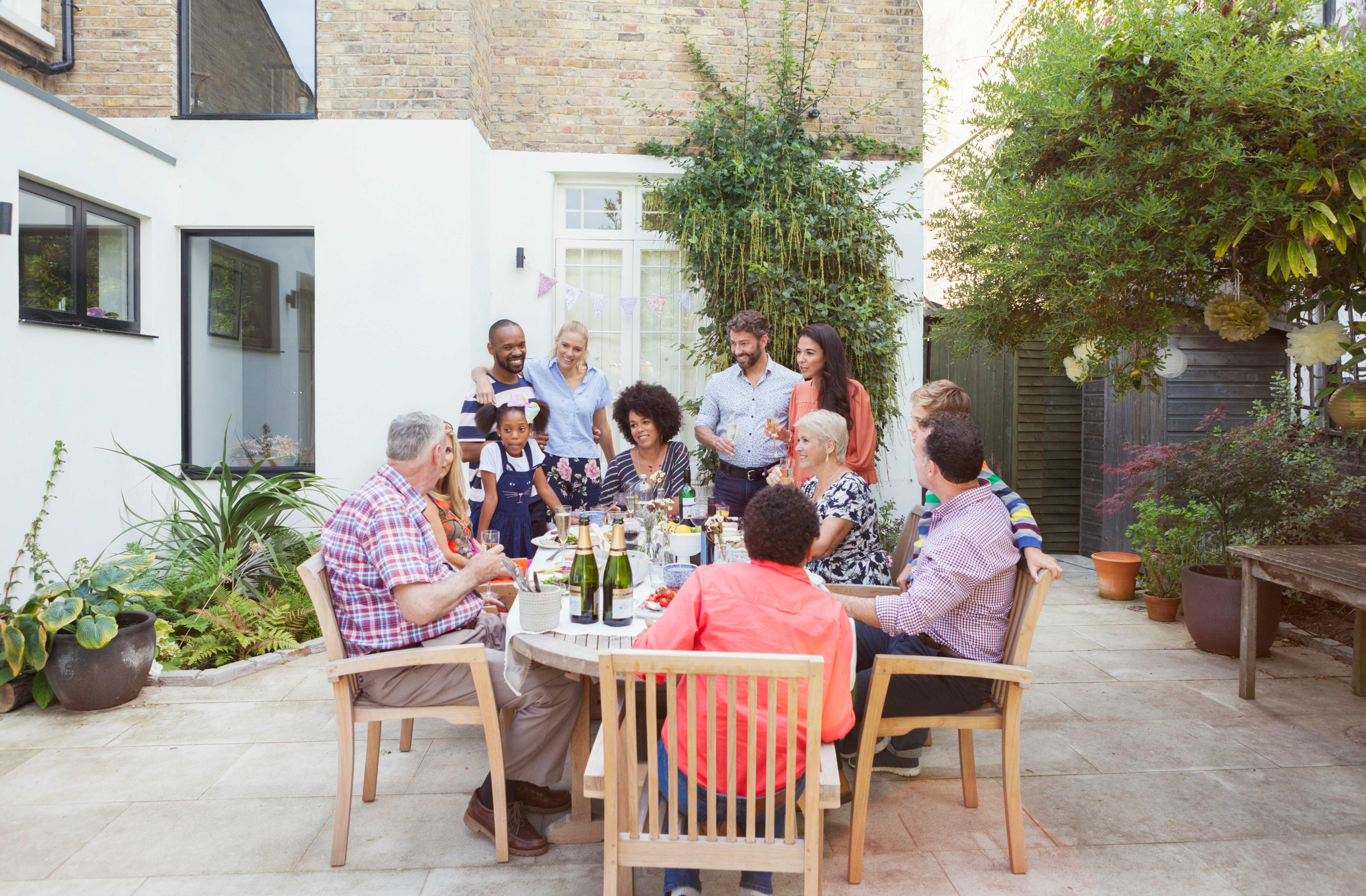

Lanais are roofed and often screened for year-round use, while a patio is open to the elements.
Both lanais and patios add outdoor living space and boost home appeal.
Lanais block bugs and weather, but they cost more to build.
Patios fit almost any climate, but require built-in shade to block the heat.
Patios and lanais both bring your living space outside, but they aren’t identical. A patio is an open-air space, while a lanai is slightly more enclosed. Each option works better for specific settings and homeowner preferences. Knowing the difference between these outdoor spaces helps you decide which matches your home and lifestyle best.
A patio is your classic outdoor spot—paved, open, and set right off the back of the house. It’s great for grilling, dining, or just sitting out in the sun, but since it’s uncovered, you’re at the mercy of the weather unless you add a pergola, awning, or umbrella.
A lanai feels more like an extension of the house. It’s roofed, often screened, and sometimes even enclosed with windows, so you can enjoy the outdoors without worrying about rain or bugs. You’ll see lanais in warm climates where people want that blend of inside comfort and outside living.
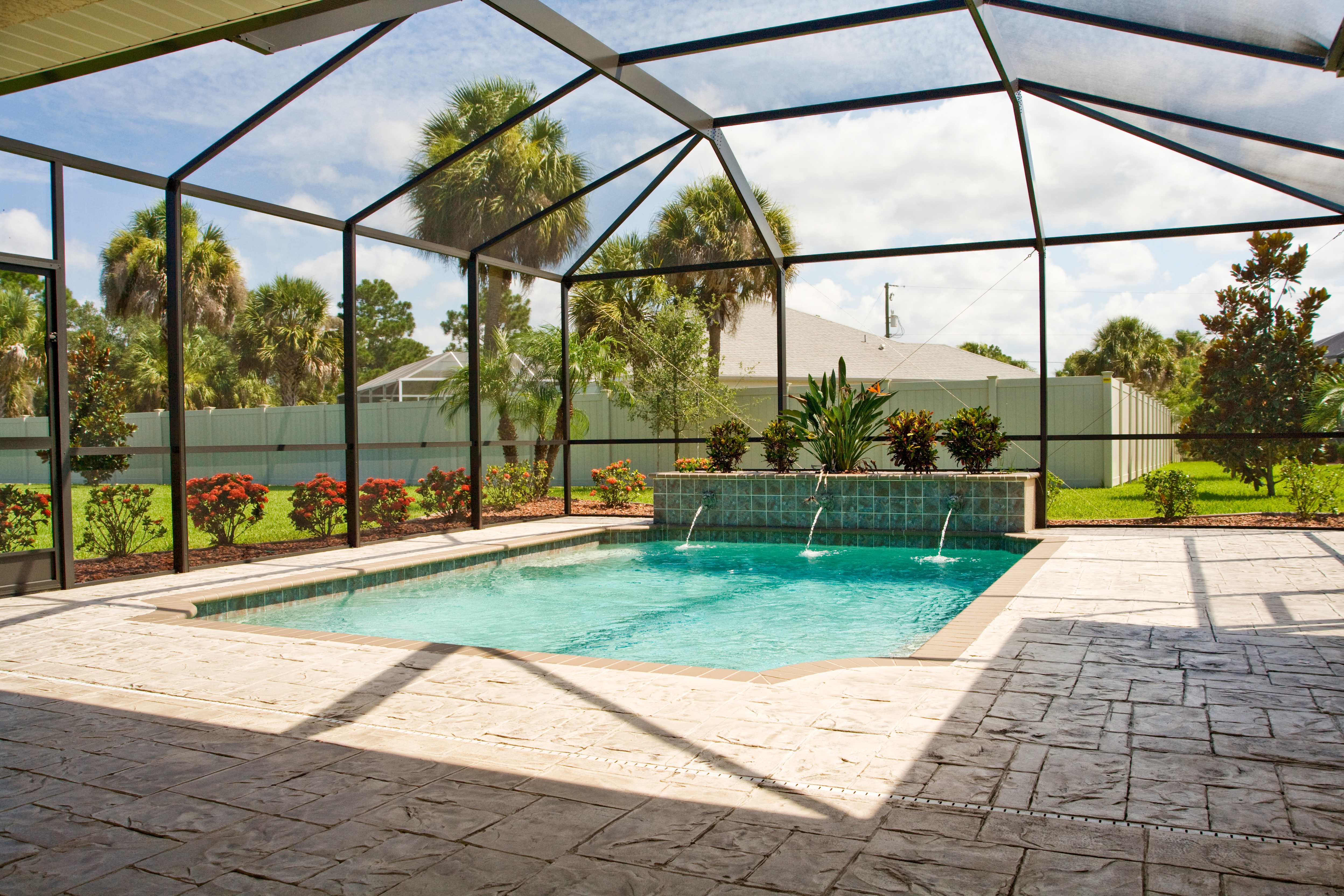
A lanai is an open-air, roofed space that’s attached to the home, usually at the back. It's enclosed with screens or windows, allowing you to experience the outdoors without the hassle of extreme weather or pests. Though common today across Florida, Texas, and California, the idea has Hawaiian roots, and the word itself is borrowed straight from one of the islands.
Modern lanais share the same basic traits: a roof, screens or walls to keep pests out, and hard flooring like concrete, pavers, or tile. They’re designed to be comfortable, shady, and breezy—a spot to entertain or take in the view without giving up the convenience of indoor living.
| Pros | Cons |
|---|---|
| Adds covered outdoor living space usable year-round | Expensive construction, depending on scale |
| Keeps bugs and debris out | Requires regular cleaning of screens or panels |
| Boosts home livability and value | Takes up backyard space that might limit other uses |
Best For:
Homeowners in warm, humid climates
People who want outdoor space without bugs or weather issues
Families looking to add usable living space around a pool
Buyers wanting an indoor-outdoor feature that adds home value
Year-round outdoor living: A lanai provides a sheltered spot to enjoy the outdoors no matter the weather. The roof and screens make it comfortable in rain or shine, so you can use the space almost like another room of the house.
Bug-free relaxation: Screens or glass panels mean you can sit outside without swatting at mosquitoes or dealing with leaves and debris blowing in.
Adds value and livability: A lanai extends your home’s footprint, creating a true indoor-outdoor flow. That extra living area can make daily life more enjoyable and boost your home’s resale appeal.
Higher upfront cost: Building or enclosing a lanai isn’t cheap. Depending on the size, materials, and whether you add extras like a pool enclosure, the price can climb quickly.
Ongoing maintenance: The same screens and panels that keep bugs out need care to stay clean and functional. Dirt, mold, or tears in the mesh mean regular maintenance or replacements.
Takes up backyard space: A lanai extends your living area, but it also eats into outdoor square footage. If your yard is small, the enclosure might limit how you use the rest of the space.
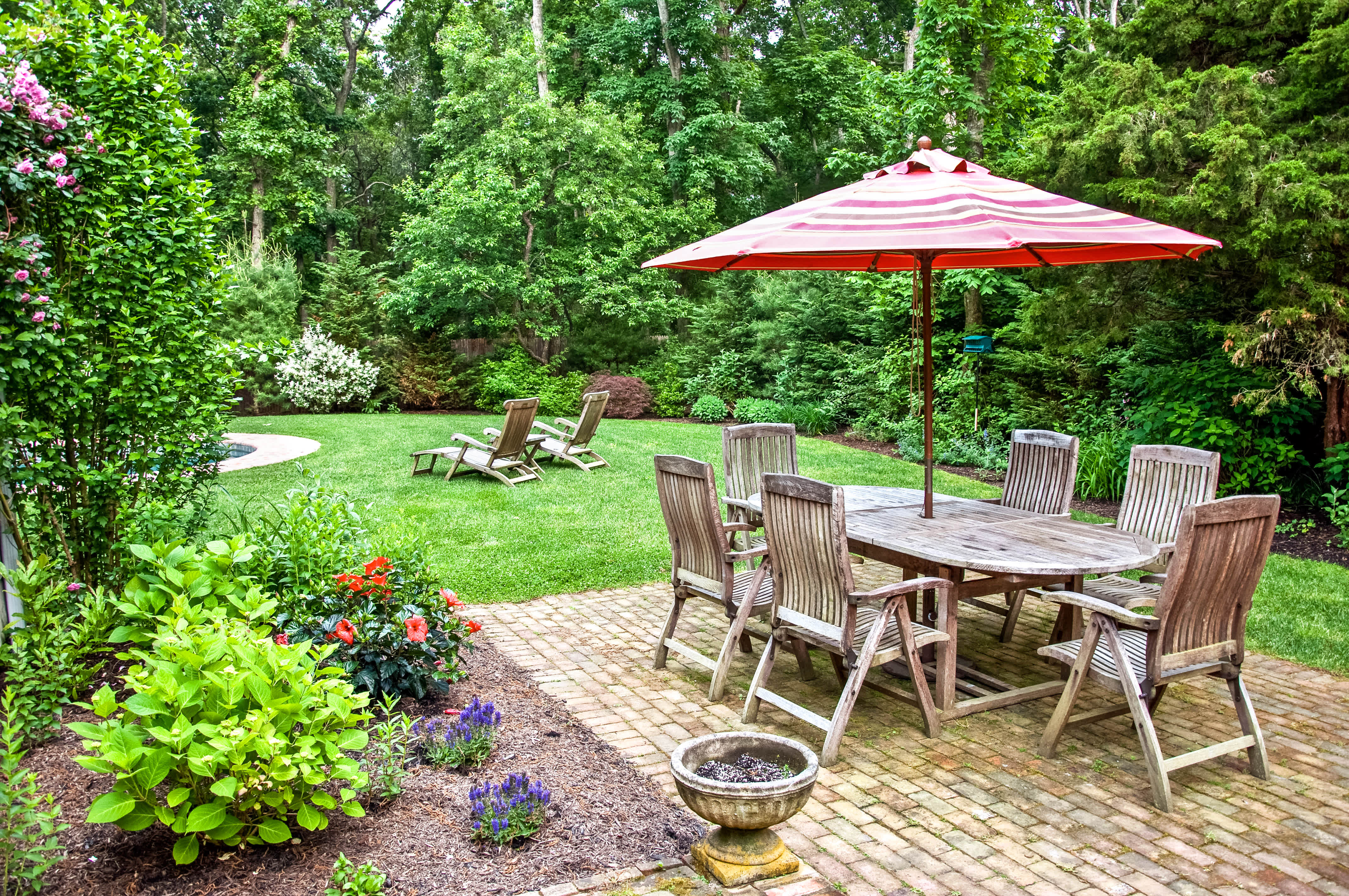
A patio is one of the simplest ways to bring living space outdoors. Built at ground level and paved with materials like concrete, stone, or brick, it provides a sturdy base for everything from dining tables to fire pits. A patio can be as basic as a small sitting area or as elaborate as a full outdoor kitchen.
Patios have been a staple in home design for decades because they’re versatile and relatively easy to build. They’re especially popular in regions with mild or dry climates, but you’ll find them everywhere because of how easy they are to adapt.
| Pros | Cons |
|---|---|
| Affordable to build compared to enclosed spaces | Doesn’t offer protection from rain, bugs, or wind |
| Flexible design options | Requires shade solutions in hot or sunny climates |
| Easy to maintain | Susceptible to weather damage like cracking or fading |
Best For:
Homeowners on a budget looking to create an outdoor space
People in dry or mild climates who want open-air living
Families who want a flexible layout for furniture or fire pits
DIYers who want a project that’s easy to install and maintain
Budget-friendly: Patios are less expensive to build than enclosed outdoor rooms like lanais or sunrooms. You can expect to pay between $2,000 to $6,000 to build a patio, depending on project specifics.
Endless design options: With materials like stone, brick, or concrete and layouts that can be customized to fit any space, patios are one of the most versatile outdoor additions.
Low maintenance: Cleaning a patio requires sweeping, rinsing, or resealing every so often. Repairs are straightforward, too, whether that’s patching a crack or replacing a few pavers.
No weather protection: Because patios are uncovered, they leave you exposed to rain, strong sun, and pests. Shade structures or covers are extra add-ons, not part of the base design.
Heats up quickly: In places with intense sun, patios can get uncomfortable without some form of shade. Materials like concrete also hold heat, which makes them less pleasant in summer.
Weather wear and tear: Over time, patios may crack, fade, or stain depending on the material. Regular upkeep can slow the damage, but exposure to the elements takes its toll.
Choosing between a lanai and a patio comes down to priorities, so here’s how they differ across a few categories.
If you want something that feels like an extension of your home, the lanai takes the prize. Roofed and often screened, it blends seamlessly with indoor living spaces and gives off a more finished look. Patios are more casual and versatile, but they don’t offer that same polished, room-like feel.
Because lanais are covered, they tend to hold up better over time. Screens and roofing keep furniture and flooring protected from rain and sun, so the space looks fresh longer. Patios, while sturdy, are exposed and can crack, fade, or stain more quickly in harsh weather conditions.
Patios are far less expensive to build than a fully enclosed lanai. A lanai adds comfort and coverage, but that upgrade comes with a higher price tag. The cost to enclose an existing back porch ranges from $8,700 to $28,370, depending on size and materials. Consult a sunroom contractor in your area to get an estimate based on your project specifics, including budget, timeline, and square footage.
In hot or buggy regions, lanais shine. The roof and screens let you enjoy the outdoors without dealing with blazing sun or swarms of mosquitoes. Patios are great in dry, mild climates, but they don’t offer the same protection in harsher conditions.
Patios are easier to care for overall—sweep them, rinse them, patch a crack here and there, and you’re done. Lanais require cleaning and repairing of screens or panels to stay in good shape, and upkeep can be more involved.
From average costs to expert advice, get all the answers you need to get your job done.

Considering adding a screened porch to your home? Discover the average cost of a screened-in porch, depending on its size, location, and more.
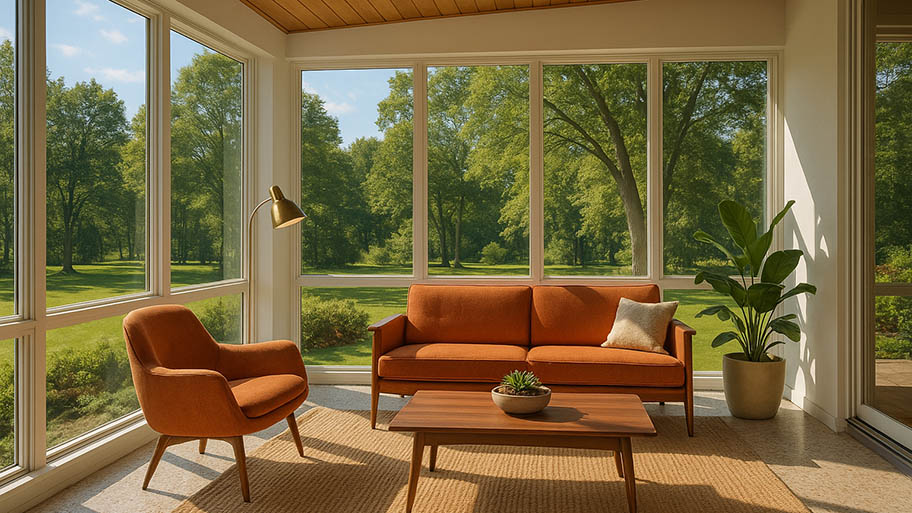
When you're ready to kick back and enjoy nature without the bugs, a sunroom is your best option. Learn how much a sunroom addition costs to set your budget.
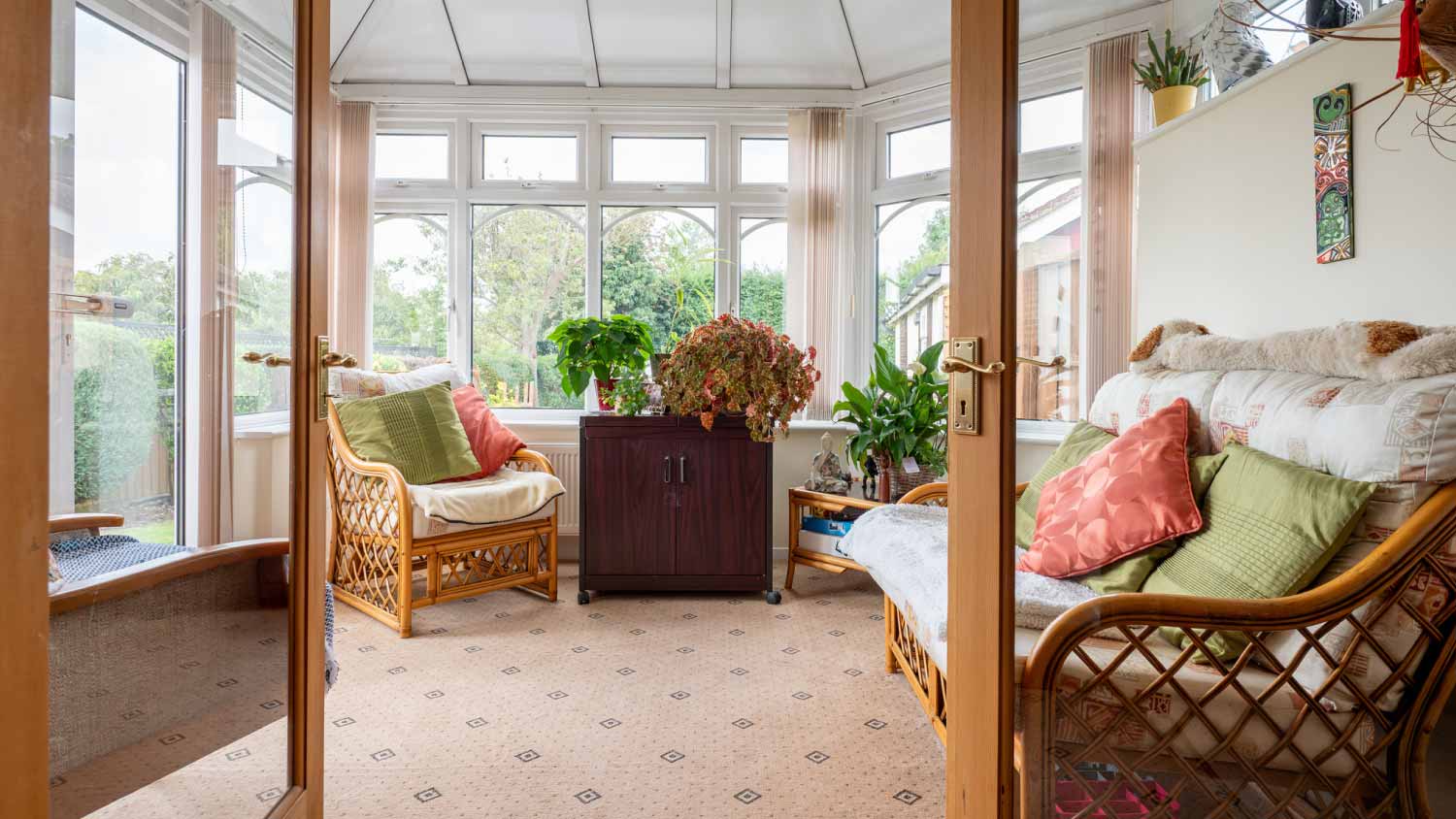
Love soaking up sun but can’t stand the bugs? Learn how much a Florida room addition costs and what factors influence the price to get the best of both worlds.

Could your home use a little more light and space? Adding a sunroom may be the right move. Here's what you need to know.

Does a screened-in porch add value to your home? It may, depending on where you live. Read on to learn more about installing a screened-in porch.

Need a year-round spot to see your gardening hobby flourish? Weigh whether a solarium or a greenhouse is the right choice for you.